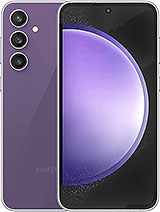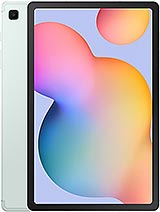The Samsung Galaxy A55 is a fine mid-ranger – but the Galaxy S23 FE is an almost flagship. How come they cost the same? As we note in our review, the A55 is tough to recommend at its current price.
And that price is £440 for an 8/128GB unit, £50 more if you want double the storage. Now, the phone just launched and we’re sure it will come down in price before long. In writing these posts, we’ve seen the Galaxy A54 on sale week after week and we have no doubt that the A55 will eventually follow the same path.
But if you need a phone right now, the Samsung Galaxy S23 FE is only £10 more for the 8/128GB model and exactly the same price for the 256GB one. You get the more powerful Exynos 2200 chipset, but note that the A55 has expandable storage and the FE does not. Also, the S23 FE supports DeX. Both phones will get the same software support (4 OS updates, 5 years of patches), but as the S23 FE is older, it started with an older Android version.
The A55 now has a larger display, 6.6” vs. 6.4” (both 120Hz FHD+ OLEDs). In the department, the 50MP main cameras and the 12MP ultra wides are similar enough, but the S23 FE has the edge with its 8MP 3x tele camera. Both phones have aluminum frames with glass front and back panels, but the S-phone has better water resistance – IP68 vs. IP67. Unfortunately, its smaller battery (4,500mAh vs. 5,000mAh) and older chipset make for poor battery life. The A55 is pretty great in this respect and while the S23 FE has wireless charging, that doesn’t quite make up for having to charge more often.
Another new Samsung device is the Galaxy Tab S6 Lite (2024). Yes, a second re-release. We appreciate the change in chipset, but would have preferred something a bit better than the Exynos 1280 (the 1380 would have been fine). And that £350 price tag for a 4/64GB slate is hard to justify.
The Samsung Galaxy Tab A9+ has a better display – 11” 90Hz LCD vs. 10.4” 60Hz LCD. And while the Snapdragon 695 certainly isn’t our top pick for a chipset, you are only paying £240 for a 4/64GB slate. And if you pay £50 more, you get not only double the storage, but also 8GB of RAM. The S6 Lite has sat on 4GB RAM since 2020.
If you want something smaller or cheaper – or both – have a look at the vanilla Galaxy Tab A9. It has an 8.7” LCD (60Hz, 1,340 x 800px) and a Helio G99, plus a tiny 5,100mAh battery with 15W charging. Nothing to write home about, but the 4/64GB model is just £140.
Going back to the Tab S6 Lite (2024), a 4/128GB version costs £390. Add £10 to that and you can buy a 6/128GB Galaxy Tab S9 FE. It’s easy to see that the FE is the better tablet – it does have the Exynos 1380 (with more RAM), for starters. The 10.9” 90Hz IPS LCD has a higher resolution (2,304 x 1,440px vs. 2,000 x 1,200px).
You also get a bigger 8,000mAh battery with 45W charging (vs. 7,040mAh and 15W). The FE even has an IP68 rating, while the S6 Lite has no official dust or water resistance. We think this is the same situation as the A55, the Tab S6 Lite (2024) is a fine device, but the price needs to come way down before it makes sense.
There is, of course, the larger Galaxy Tab S9 FE+ with a 12.4” IPS LCD (90Hz, 2,560 x 1,600px) and a larger 1,090mAh battery. The 8/128GB model is not a bad deal at £600, but not an amazing one either. And we certainly can’t recommend the 8/256GB version at £700.
That is because last year’s flagship tablet, the Samsung Galaxy Tab S8 Ultra is down to £750 – this is for the 12/512GB model. It’s no contest between the two, the Ultra has a huge 14.6” 120Hz OLED display (2,960 x 1,848px) and a Snapdragon 8 Gen 1 chipset with an 11,200mAh battery with 45W charging. It still has a microSD slot, in case the 512GB internal storage isn’t enough.
We may get a commission from qualifying sales.









